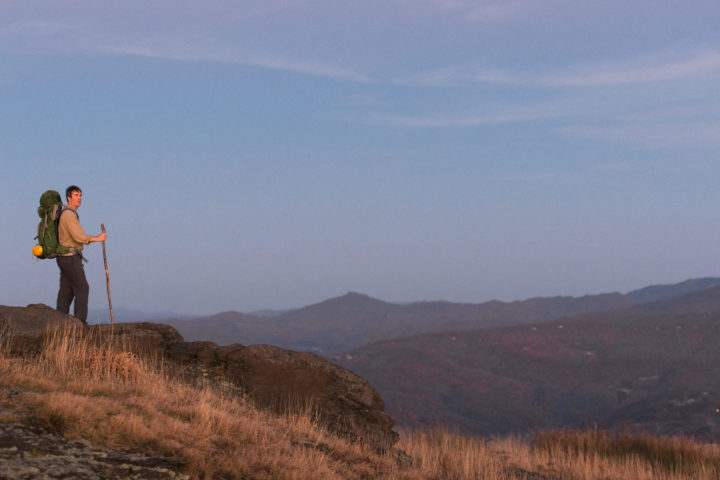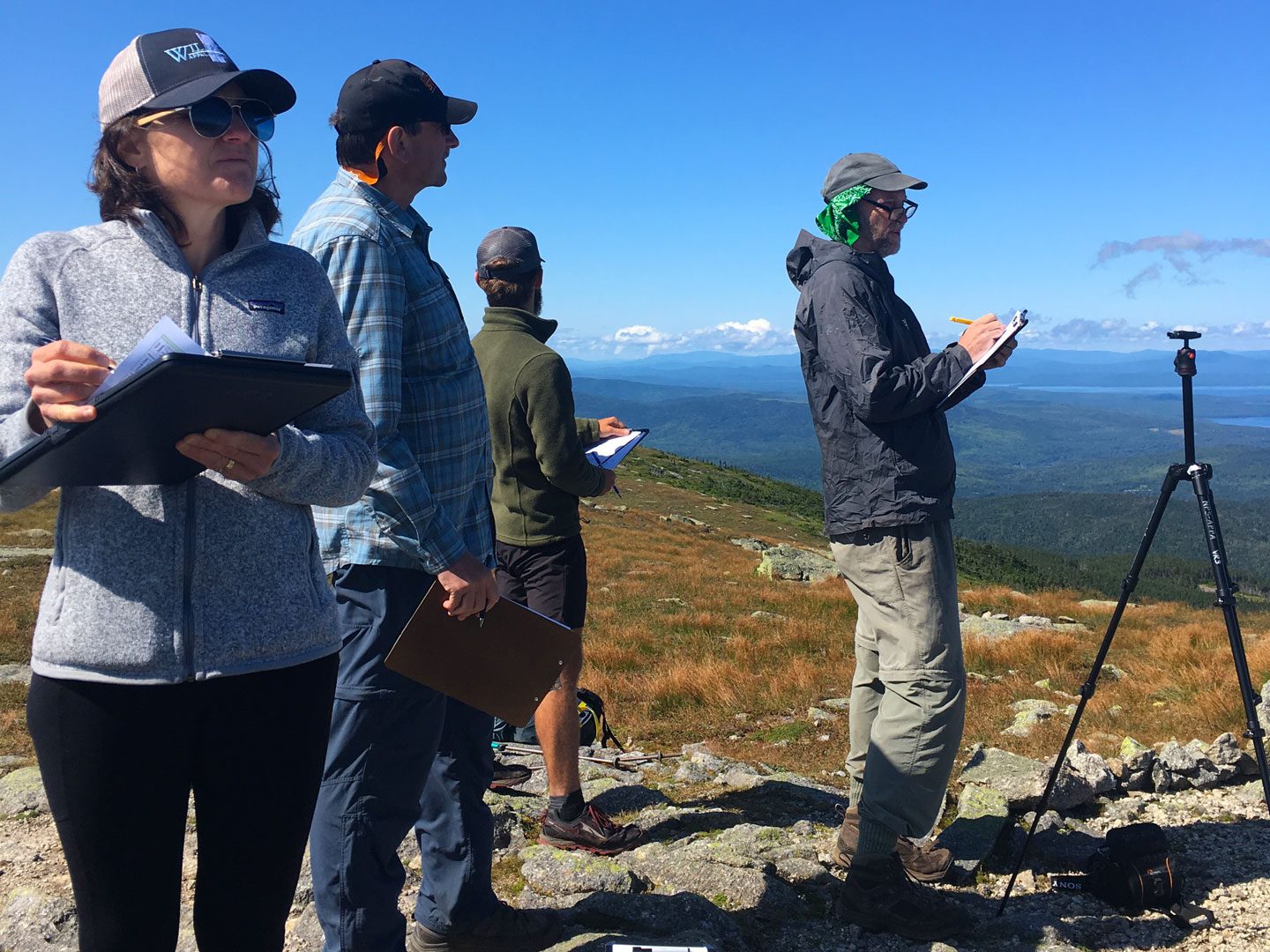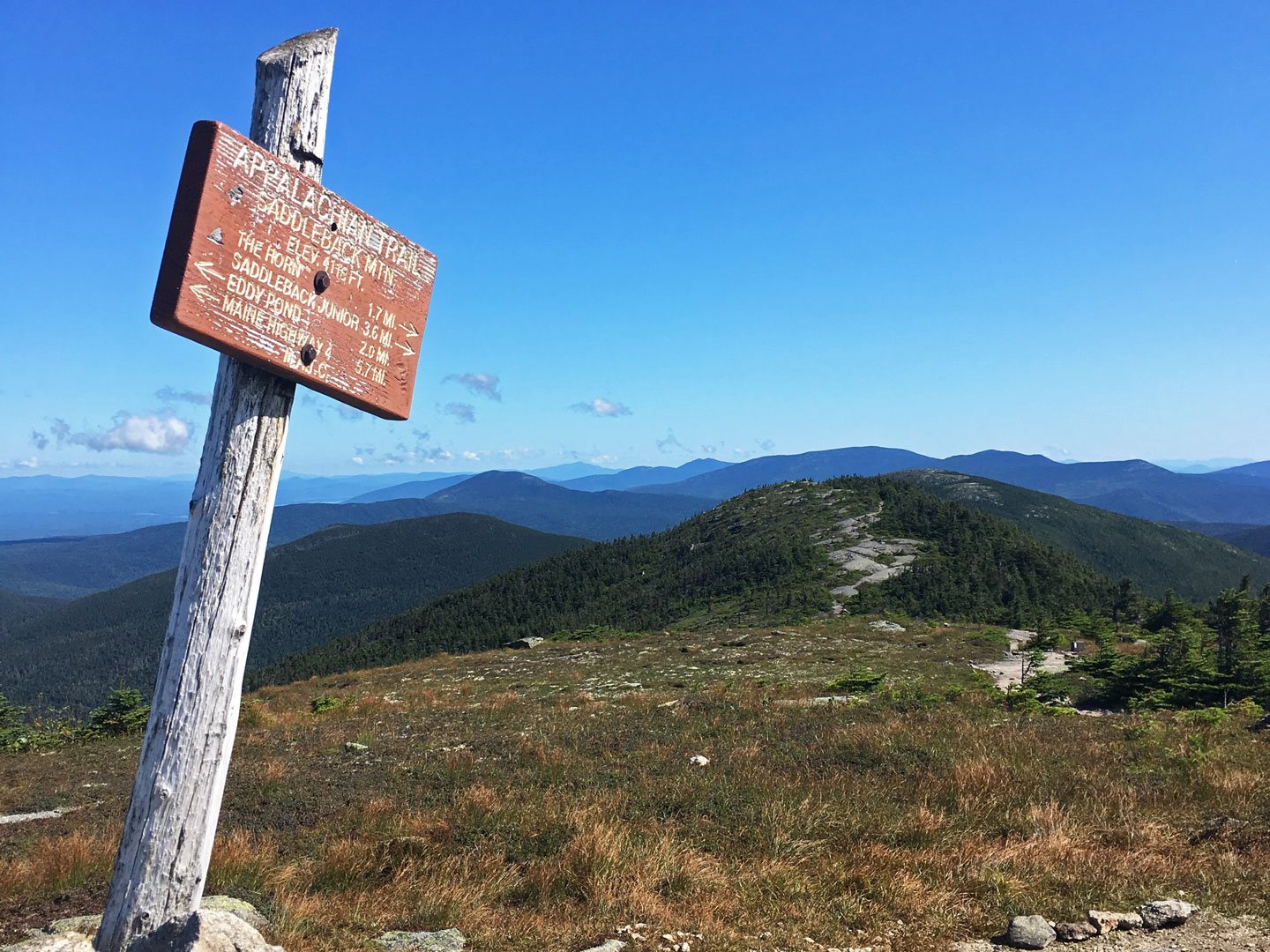By Jordan Bowman, ATC Director of Communications
What Makes an A.T. View Great?
September 18, 2020
Picture, in your mind, an Appalachian Trail (A.T.) view that inspires you.
Now have a fellow A.T. hiker do the same.
Did the view they selected look anything like yours? Most likely not.
Since the A.T. traverses so many regions, the views along its 2,193 miles vary significantly, sometimes even within a few miles. From craggy mountains in North Georgia, to rolling farmlands in Pennsylvania, to the rugged Saddleback Range in Maine, the Trail provides visitors with a diversity of views to admire, each tied to the environments surrounding the footpath. And while each view may differ in scope and composition, all of them are important to preserving the irreplaceable A.T. experience, and all of them inspire us for a wide variety of reasons.
“The values of views are tied to place, showcasing unique landscapes, cultures and histories,” said Marian Orlousky, Appalachian Trail Conservancy (ATC) Director of Science and Stewardship. “What outstanding views have in common is that they provide unique experiences, they build a connection between visitor and the landscape, and they inspire.”
Yet as inspiring as A.T. views are, it is easy for us to take them for granted. Most of these views have survived for centuries, after all, so many of us don’t stop to consider what it will take to protect them well into the future. Steady population growth in the Eastern United States and intensifying land use near the Trail — including increasingly larger scale infrastructure development — are two factors (of many) that could permanently impact the quality of A.T. views.
To better address these looming threats, the ATC and the National Park Service (NPS) are taking a vital first step to ensure that we identify and accurately describe the scenic beauty along the A.T. by taking inventory of the current state of the Trail’s irreplaceable views.
Known as the “Enjoy the View” initiative, the ATC and NPS will be collecting data and taking in-depth photographs of over 1,400 viewpoints along the entire A.T. The initiative began in 2019 with an assessment of 70 scenic views at four very different sites along the Trail: Nantahala National Forest in North Carolina, the Virginia “Triple Crown,” South Mountain in Pennsylvania and the Saddleback Range in Maine.
Participants carefully photographed select views from each area, identified the type of view seen (for example, “natural,” “agricultural” or “suburban”), documented the elements of the landscape (mountains, lakes, roads, etc.) and, importantly, assessed the level of impact each view has already sustained and the potential for additional impacts in the future.
The data collected from this program will be invaluable in helping the ATC and its partners determine the funding and effort needed to protect and conserve many of the Trail’s most iconic views. Having photographs of both pristine views and significantly impacted landscapes will provide some of the clearest examples possible of what could happen to these views if we are not proactive in advocating for their conservation — and will help educate the public and policymakers about how important (and fragile) A.T. scenic resources truly are.
“Each view along the Trail is unique, like a piece of art,” said Laura Belleville, ATC Vice President of Conservation and Trail Programs. “There are shapes and colors, lines and texture that draw our eye and fill our experience with an often-indescribable feeling of awe, wonder, appreciation and gratitude. Our team’s challenge is to unite art and science so that we can adequately describe what needs to be protected above all else. Thanks to landscape architects at the National Park Service and the hard work of our pilot teams, we now have the Trail tested tools to do that.”
All the data collected through “Enjoy the View” is also designed to be defensible in court. If a developer negatively impacts an A.T. view, the data gathered through “Enjoy the View” equips the ATC to objectively show the true impacts. Without this data, we might not have the information needed to seek damages or help modify developments that could negatively impact the A.T. experience.
So, what remains to be completed in “Enjoy the View”? In truth, quite a bit. 1,326 A.T. views are still waiting to be assessed, which would cost at least $795,000 to complete. These costs include project leadership, new seasonal positions, recruiting and training volunteers, database and mapping support, and time for analyses and documentation.
Undoubtedly, all of this work is worth it. Picture, once again, in your mind an A.T. view. That view will only remain protected for your next visit, and for millions more, through the work of the ATC and through programs like “Enjoy the View.” After all, the inspiration and beauty we experience when confronted by the A.T.’s scenic beauty comes at a cost but is, ultimately, invaluable.
Help us protect the irreplaceable A.T. views so that they can inspire generations to come.
Header image by Eddie Cerrone
Discover More

ATC's Official Blog
A.T. Footpath
Learn more about ATC's work and the community of dreamers and doers protecting and celebrating the Appalachian Trail.

Stay Informed
Latest News
Read the latest news and updates about the Appalachian Trail and our work to protect it.

Listen Now
“Where We Walk” Podcast
This six-part podcast miniseries explores the women who have helped make the Trail what it is today, as well as those who are shaping its future.



